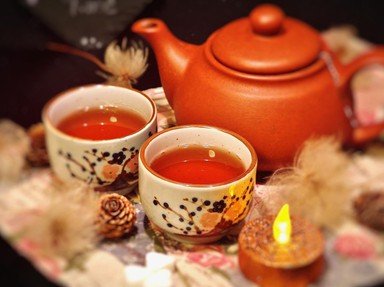Quiz Answer Key and Fun Facts
1. Everyone knows that tea is made from the leaves of a plant. What's the name of the plant?
2. Although tea originated in south east Asia, it is enjoyed by people around the world. The Chinese word for tea is t'e, and most languages use a derivative of t'e for their word for the fragrant brew. There are some exceptions, however. What do the Poles call tea?
3. The earliest recorded tea drinkers are the Chinese. Just how long have they been brewing up the lovely stuff?
4. When did the British start drinking tea?
5. Every student of history knows about the Boston Tea Party, during which Bostonians, dressed up as Mohawks, dumped crates of British tea into Boston Harbour as a protest against British taxation policies, especially taxes on tea. At that time (1773), who drank more tea - the Americans or the British?
6. Who issued a decree that tea should be in leaf form rather than brick form?
7. Who first introduced tea into Europe?
8. Who invented tea bags?
9. What's the difference between black tea and green tea?
10. Long Island Iced Tea is a popular thirst-quencher during the hot summers prevalent in North America. How much tea goes into the average Long Island Iced Tea recipe?
Source: Author
Cymruambyth
This quiz was reviewed by FunTrivia editor
Exit10 before going online.
Any errors found in FunTrivia content are routinely corrected through our feedback system.

